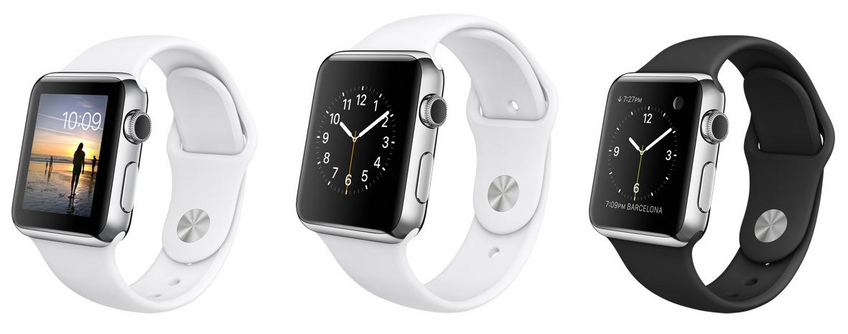

Richard Mille and connected watches
The watch passed from the table to the pocket and then from the pocket to the wrist. So, too, now, the telephone has, to a certain extent, followed the same path about a century later.
This object has been a fantasy ever since the invention of science fiction, an instrument of communication, the connected relay point worn by the new generation on their wrists and which has been in the kliegs of the watch brands for some months now. Because most of them are not happy about having to share space with a Johnny-come-lately, an object that serves as a new means of interaction with one's environment, a privileged space as well that watches had managed to conquer without ever imagining that one day they would have to fight to keep it.
The calm before the storm
For two years now, someone has been announcing its imminent arrival, and now, like a bolt from the blue, it has appeared. For some, it was a breaking point, the start of a kind of Armageddon in the watch world. For others, the new watch will have no impact, because well-established brands cannot be destabilized by a product that is not, essentially, a watch. Richard Mille, speaking at the Arts & Elegance competition in Chantilly, of which he is the principal sponsor, feels that brands like his have nothing to fear from these new generation products. Proof of the pudding: on one wrist he had a watch worth more than 300,000 euros, and on the other a cheap Samsung connected to his cellphone. Those who know the industry well will have noted the connection between these products and the first quartz watches. Less than two years after their launch, the LCD revolution deflated the traditional market which, all things considered, had been in very good shape just before.

When the bell tolls
Today's generation is connected to Instagram, Tweeter, to Facebook. Better than a real friend is a virtual friend. Communication is now conceived on a global scale and luxury watches only represent an insignificant segment of the market for real watchmaking. But what is the value of this share of the market if the rest of the industry collapses for lack of consumers? No one really seeks to know what a watch is really worth if you have to keep supporting suppliers who cannot consider producing for a single brand, even one with a very high price tag. The market is the sum total of an interdependence, and, ultimately, the companies are not measuring the consequences, because they are so convinced they have nothing to fear.Just as an explosion is the final result of a chain reaction, the watch market is dependent on a common vision. All it needs is a grain of sand, or the beating of a butterfly wing – and not necessarily that of the Hautlence Morphos by Eric Cantona – for the whole creaky system to end up grinding to a halt altogether the moment the right adversary shows up. Because the power of this new adversary lies in its ability to incarnate all the values dear to the young generation, which will only swear by "dad's watches" in ten years' time. And those who find themselves between the two generations will do what they always do, dive into the strongest stream to avoid appearing out of place. After all, one must say, for a certain number of consumers, acquiring a quality watch is actually an act of conformism, a gesture that suggests social conformism. At the first sign of a cooling in the market, they will go check if the grass is greener elsewhere, even if it means wearing a multifunctional connected tool. Besides, why cry "Wolf!" if you can't even hear the animal's howlings at night?
The future is marching on
Richard Mille is quite right to point out that wearing a luxury watch on one wrist and a cheap tool on the other is a possibility.It's true, moreover he acknowledges that this rather unwieldy instrument is quite practical. But it is well beyond the habits of the traditional consumer. Richard Mille creates trends, he is a visionary and an entrepreneur who is preaching to the choir.He says that himself: "I am afraid of nothing. I am not clogged up with idiotic concepts."There is no war between these two worlds. You will soon have a watch for days of the week and one for the weekend, just as you will probably soon have an electric car for the city and one with an internal combustion engine for the road.Nevertheless, no one will do what Nicolas Hayek did, namely wear eight to ten watches spread out over his two wrists. A watchmaker has a duty towards his audience and must defend his cause. Defending it means being aware of its fragility and alerting people of the stance required in the face of a new concept in the ways and means of looking at the passage of time. There will be a before and after in watchmaking where traditional quartz is concerned. We have reached the V3 of wrist watchmaking, and that is that. We will have to learn to live with a new protagonist that may have an impact on the traditional watch markets, or may not have any at all... nothing has been decided as of yet.

Choose your path
Nevertheless, Richard is convinced that traditional watchmaking will prevail, be that niche brands or his own, even after the communication tools of the new generation have become well established. That is quite possible, and for those of us who live and breathe this profession, it would be highly desirable. The one question remains, and that is to know whether everyone will have the good taste to put a mechanical watch on one wrist and a networked tool on the other, like Richard Mille. The behaviorists believe that to encircle each wrist with an object is a sign of subjection, something that westerners do not practice very much. It was never done in fact, but prior to the appearance of wristwatches, you would have needed a very good reason to actually put a watch on your wrist. So there is no evidence out there to show that customs are immutable. But to change does take a certain period of adaptation, and today it is impossible to predict whether the traditional watchmaking companies, even with the support of the large financial groups, will be able to get ahead of these tools, whose Achilles' heel is their rate of planned obsolescence. The geeks are right when they say that mechanical watches have the same problem, but seen from a different angle. Their obsolescence is also programmed. However, it is not connected with their technology, which has hardly changed for the past 500 years, but rather to the vagaries of fashion.
So, yes, undoubtedly, the traditional brands will make it, the way they have always succeeded in coming out of crises. But once this tsunami has passed – and it seems to be quite strong and capable of having an impact on today's assets – things will not be the same, inevitably, and the craft and the communication thereof will have to be adapted accordingly.In the past, the industry managed to bounce back thanks to the foresight and strategies of the market's main players. In its very essence, the mechanical watch has become obsolescent in a world that is moving at the speed of fiber optics and non-wire communication.And because it is obsolete, it has every opportunity to emerge from the pending crisis stronger and more vigorous than before.


